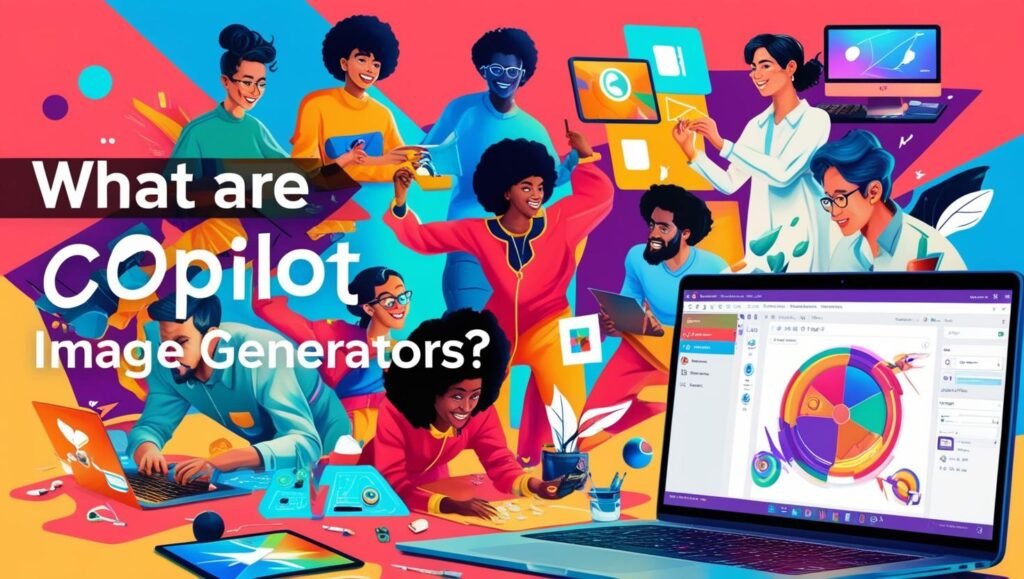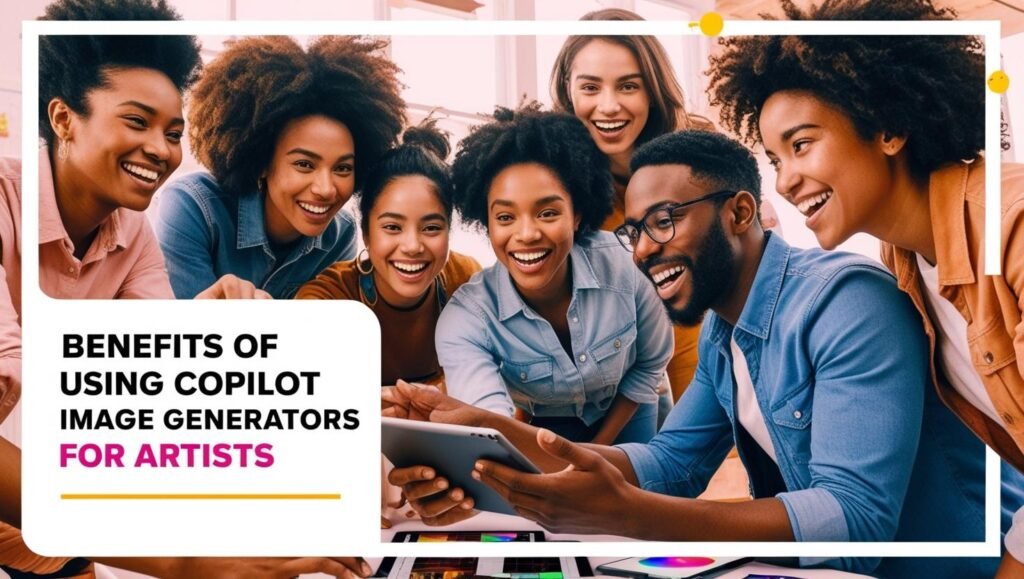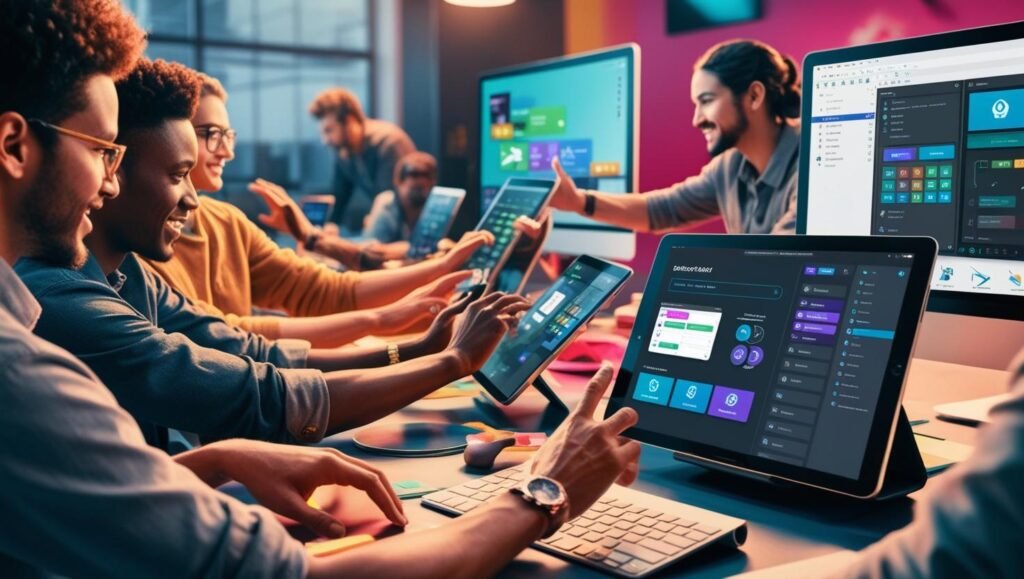Copilot Image Generators Explained And Why Digital Artists Are Paying Attention

In a world where creativity knows no bounds, copilot image generators are redefining the landscape of digital art. These innovative tools harness the power of artificial intelligence to assist artists in transforming their visions into stunning visuals often in mere moments.
Gone are the days when creating intricate designs required countless hours of skill and effort. Today, artists and hobbyists alike can explore limitless possibilities, pushing the envelope of imagination as technology becomes their collaborative partner.
As these generators evolve, they’re not just tools; they are catalysts for inspiration, offering a fresh perspective on the creative process. From generating unique concepts to providing unexpected color palettes, copilot image generators invite artists to experiment fearlessly.
In this article, we delve into how these revolutionary technologies are not only changing the way art is created but also democratizing artistic expression for everyone. Join us as we explore the incredible impact of copilot image generators on the digital art scene.
The Evolution of Digital Art
Digital art has come a long way since its inception, transforming from rudimentary pixel art to sophisticated, high-resolution digital masterpieces. Initially, digital art was limited to basic two-dimensional graphics created using early computer software.
These early digital artists had to grapple with restrictive technology and limited tools, making the creative process both labor-intensive and time-consuming. However, the rapid advancement of technology over the past few decades has dramatically altered the landscape of digital art, enabling artists to explore new realms of creativity with innovative software and tools.
The introduction of digital painting software in the late 20th century marked a significant milestone in the evolution of digital art. Programs like Adobe Photoshop and Corel Painter provided artists with a wide range of brushes, textures, and effects, mimicking traditional art techniques while offering the flexibility and efficiency of digital media.
These tools allowed artists to experiment with different styles and techniques without the limitations of physical materials, leading to a surge in creativity and the emergence of digital art as a legitimate art form.
As technology continued to evolve, so did digital art. The advent of powerful graphic tablets and styluses enabled artists to draw and paint directly on a digital canvas, providing a more intuitive and natural drawing experience.
Furthermore, the rise of the internet and social media platforms facilitated the sharing and dissemination of digital art, allowing artists to reach a global audience and gain recognition for their work. Today, digital art encompasses a wide range of styles and genres, from photorealistic digital paintings to abstract generative art, reflecting the boundless potential of this ever-evolving medium.
What are Copilot Image Generators?

Copilot image generators are a groundbreaking development in the field of digital art, leveraging artificial intelligence (AI) to assist artists in creating visual content. These sophisticated tools utilize machine learning algorithms to analyze vast amounts of data, enabling them to generate images based on specific inputs or parameters provided by the user.
Essentially, copilot image generators act as a collaborative partner, offering suggestions, generating ideas, and even creating entire compositions, thereby streamlining the creative process.
The core technology behind copilot image generators involves training neural networks on extensive datasets of existing artwork, photographs, and other visual media. By learning patterns and styles from this data, the AI can generate new images that exhibit similar characteristics.
Some advanced copilot tools also incorporate natural language processing, allowing artists to input text descriptions or prompts, which the AI then translates into visual representations. This capability opens up new avenues for creativity, enabling artists to experiment with different concepts and ideas without the constraints of traditional methods.
Copilot image generators come in various forms, ranging from standalone applications to integrated features within digital art software. Popular examples include tools like DALL-E, DeepArt, and Artbreeder, each offering unique functionalities and user interfaces.
These tools are designed to be user-friendly, making them accessible to both professional artists and hobbyists. By providing a collaborative and intuitive creative experience, copilot image generators are revolutionizing the way digital art is conceived and produced.
Key Features of Copilot Image Generators
One of the most notable features of copilot image generators is their ability to produce high-quality images with minimal input from the user. By simply providing a prompt or a set of parameters, artists can generate detailed and visually appealing compositions in a matter of seconds.
This capability significantly reduces the time and effort required to create intricate designs, allowing artists to focus on refining and personalizing their work. The efficiency and speed of copilot image generators make them invaluable tools for artists looking to streamline their creative process.
Another key feature of copilot image generators is their versatility. These tools can be used to generate a wide range of visual content, from realistic portraits and landscapes to abstract patterns and textures. This versatility is particularly beneficial for artists working in fields such as graphic design, animation, and game development, where diverse and dynamic visual content is often required.
Additionally, copilot image generators can be customized to suit specific artistic styles or preferences, providing a tailored creative experience for each user.
Copilot image generators also offer advanced editing and enhancement capabilities. Many of these tools include features such as style transfer, where the AI can apply the visual characteristics of one image to another, and image refinement, where the AI can enhance or modify specific aspects of an image based on user input.
These features enable artists to experiment with different techniques and effects, pushing the boundaries of their creativity. Furthermore, some copilot tools incorporate collaborative features, allowing multiple users to work on the same project simultaneously, fostering a collaborative and interactive creative environment.
Benefits of Using Copilot Image Generators for Artists

One of the primary benefits of using copilot image generators is the significant reduction in time and effort required to create high-quality digital art. Traditional methods of creating intricate designs can be labor-intensive and time-consuming, often requiring extensive skill and experience.
Copilot image generators streamline this process by providing artists with instant access to a vast array of visual elements and compositions, allowing them to focus on refining and personalizing their work. This efficiency enables artists to produce more content in less time, increasing their productivity and creative output.
Another major benefit of copilot image generators is their ability to enhance the creative process. These tools offer a wealth of inspiration and ideas, helping artists to overcome creative blocks and explore new artistic concepts.
By generating unique and unexpected visual content, copilot image generators encourage artists to experiment fearlessly and push the boundaries of their creativity. This exploratory approach can lead to the discovery of new styles and techniques, enriching the artist’s creative repertoire and fostering innovation in the field of digital art.
Copilot image generators also democratize artistic expression by making digital art more accessible to a wider audience. Traditional methods of creating digital art often require specialized skills and expensive equipment, which can be barriers to entry for aspiring artists.
Copilot image generators, on the other hand, are designed to be user-friendly and accessible, allowing individuals with little to no experience in digital art to create stunning visuals with ease. This inclusivity empowers a diverse range of artists to express their creativity and share their work with the world, contributing to a more vibrant and diverse digital art community.
How Copilot Image Generators Enhance Creativity
Copilot image generators play a crucial role in enhancing creativity by providing artists with a wealth of inspiration and ideas. These tools are capable of generating unique and unexpected visual content based on specific inputs or parameters, offering a fresh perspective on the creative process.
By presenting artists with new and innovative concepts, copilot image generators help to break down creative barriers and encourage experimentation. This exploratory approach enables artists to discover new styles and techniques, pushing the boundaries of their creativity and fostering artistic growth.
Another way copilot image generators enhance creativity is by facilitating collaboration and interaction. Many of these tools include collaborative features, allowing multiple users to work on the same project simultaneously. This interactive environment fosters the exchange of ideas and techniques, leading to the creation of more dynamic and innovative artwork.
Collaborative copilot tools also enable artists to learn from one another, gaining new insights and perspectives that can inform their own creative practice. This collaborative approach not only enhances individual creativity but also contributes to the collective growth of the digital art community.
Copilot image generators also support creative exploration by offering advanced editing and enhancement capabilities. Features such as style transfer, image refinement, and customization enable artists to experiment with different techniques and effects, creating unique and personalized artwork.
These capabilities allow artists to push the boundaries of their creativity, exploring new artistic possibilities and developing their own distinct style. By providing a platform for creative exploration and experimentation, copilot image generators empower artists to express their creativity in innovative and exciting ways.
Case Studies: Successful Digital Artists Using Copilot Tools

One notable example of a digital artist who has successfully integrated copilot image generators into their creative practice is Anna Ridler. Ridler is known for her innovative use of AI and machine learning in her artwork, creating visually stunning pieces that explore the intersection of technology and art.
By harnessing the power of copilot tools, Ridler is able to generate unique and thought-provoking visual content, pushing the boundaries of traditional art forms and challenging viewers to reconsider the role of technology in the creative process.
Another successful digital artist who has embraced copilot image generators is Mario Klingemann, also known as Quasimondo. Klingemann is a pioneer in the field of AI art, using machine learning algorithms to create intricate and mesmerizing visuals. His work often involves the use of copilot tools to generate abstract and surreal imagery, blending elements of human creativity with the computational power of AI.
By leveraging these tools, Klingemann is able to explore new artistic concepts and techniques, producing work that is both innovative and visually captivating.
In the realm of digital illustration, artist and designer Beeple has also made significant strides using copilot image generators. Known for his daily digital art practice, Beeple has utilized AI tools to enhance his creative process, generating complex and detailed visuals with remarkable efficiency.
By incorporating copilot tools into his workflow, Beeple is able to produce a high volume of high-quality content, maintaining his prolific output while continuing to push the boundaries of digital art. His success serves as a testament to the transformative potential of copilot image generators in the creative industry.
Challenges and Limitations of Copilot Image Generators
Despite their many benefits, copilot image generators also present certain challenges and limitations. One of the primary concerns is the potential for over-reliance on AI-generated content, which can stifle individual creativity and originality.
While these tools are designed to assist and inspire artists, there is a risk that some users may become overly dependent on the AI, leading to a homogenization of artistic styles and a lack of unique, personal expression. It is important for artists to strike a balance between utilizing copilot tools and maintaining their own creative voice.
Another challenge associated with copilot image generators is the ethical implications of using AI-generated content. Issues such as copyright infringement and the appropriation of existing artwork are significant concerns in the digital art community.
Since copilot tools often rely on large datasets of existing images to generate new content, there is a risk that the AI may inadvertently reproduce or mimic copyrighted material. Artists using these tools must be mindful of these ethical considerations and ensure that their work respects the intellectual property rights of others.
Technical limitations are also a factor to consider when using copilot image generators. While these tools have made significant advancements in recent years, they are not without their flaws. The quality and accuracy of AI-generated content can vary, and some tools may produce results that are inconsistent or lack the desired level of detail.
Additionally, the computational power required to run advanced copilot tools can be demanding, posing a barrier for artists with limited access to high-performance hardware. As technology continues to evolve, it is likely that these limitations will be addressed, but they remain a consideration for artists in the present.
The Future of Digital Art with AI Technology

The future of digital art with AI technology is incredibly promising, as advancements in artificial intelligence continue to revolutionize the creative process. As copilot image generators become more sophisticated, they will offer even greater capabilities and functionalities, enabling artists to explore new artistic possibilities and push the boundaries of their creativity.
The integration of AI technology into digital art will likely lead to the development of more intuitive and powerful tools, providing artists with unprecedented levels of control and flexibility in their creative practice.
One potential trend in the future of digital art with AI technology is the increased collaboration between human artists and AI. As AI tools become more advanced, they will be able to better understand and respond to the unique preferences and styles of individual artists, fostering a more seamless and collaborative creative process.
This symbiotic relationship between human creativity and AI technology will enable artists to produce work that is both innovative and deeply personal, blending the best of both worlds to create truly groundbreaking art.
The democratization of digital art is another exciting prospect for the future, as AI technology continues to make artistic expression more accessible to a wider audience. As copilot image generators become more user-friendly and affordable, individuals from diverse backgrounds and skill levels will be able to create and share their own digital art.
This inclusivity will lead to a more vibrant and diverse digital art community, fostering a rich exchange of ideas and perspectives. The future of digital art with AI technology holds immense potential for innovation, creativity, and inclusivity, shaping the art world in ways we have yet to imagine.
Conclusion:
In conclusion, copilot image generators are revolutionizing the landscape of digital art, offering artists new tools and opportunities to explore their creativity. These innovative AI-driven tools streamline the creative process, provide a wealth of inspiration, and democratize artistic expression, making digital art more accessible to a wider audience.
While there are challenges and limitations to consider, the benefits of copilot image generators far outweigh the drawbacks, empowering artists to push the boundaries of their creativity and produce groundbreaking work.
As technology continues to advance, the future of digital art with AI technology is incredibly promising. The integration of AI into the creative process will lead to the development of more sophisticated and intuitive tools, fostering greater collaboration between human artists and AI.
This symbiotic relationship will enable artists to produce work that is both innovative and deeply personal, blending the best of human creativity with the computational power of AI. The democratization of digital art will also contribute to a more vibrant and diverse artistic community, enriching the cultural landscape with a rich tapestry of ideas and perspectives.
Ultimately, the rise of copilot image generators marks a new era in the world of digital art, offering exciting possibilities for artists and hobbyists alike. By embracing these revolutionary technologies, artists can unlock new levels of creativity and innovation, transforming their visions into stunning visuals with ease.
As we move forward, it is essential to balance the use of AI tools with our own creative instincts, ensuring that the art we create remains a true reflection of our unique perspectives and experiences. The future of digital art is bright, and with copilot image generators as our collaborative partners, the possibilities are truly limitless.
For the latest insights and updates, be sure to explore our AI Trends & News and stay ahead in the world of artificial intelligence.

Pingback: GPT‑Image‑1 Review: Text-to-Image AI - AI insights world
Pingback: Midjourney v7 Review - AI insights world